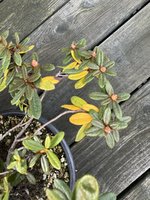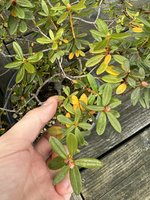pandacular
Masterpiece
I took this one home today! First order of business is figuring out a long term plan for the roots. Looking at it, I keep going back and forth on whether I like them exposed! I think for the time being, I’ll cover them as @Deep Sea Diver recommends, but I wonder what really leaning into them might achieve…
I’ll be doing some research on rhodie care, as I know very little about the genus.
I’ll be doing some research on rhodie care, as I know very little about the genus.










